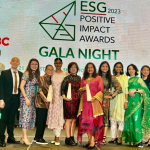Almost three years into the pandemic, consumers in Malaysia continue to enjoy shopping online, but they are also going back to shop at physical stores. While people are venturing out of their homes again, the number of categories purchased online remain consistent.
According to Meta and Bain & Company’s annual SYNC Southeast Asia (SEA) report which examines the digital consumer landscape and the future of eCommerce in the region, SEA is expected to perform better than global peers in longer term growth prospects in spite of a speedbump in gross merchandise volume (GMV) growth owing to supply chain and inflationary pressures.
Meanwhile in Malaysia, overall digital shopping outlook remains positive, GMV still expected to grow by a CAGR (compounded annual growth rate) of 11% from 2022 to 2027.
This is largely driven by the steady growth of Malaysia’s digital consumer population which is the highest among Indonesia, Philippines, Singapore, Thailand and Vietnam with 25 million digital consumers accounting for 99% of the 15-year-olds and above population.
“Online shopping in Malaysia remains an important channel for shoppers in the entire consumer journey, even though we see consumers are back at physical stores. Businesses and brands can leverage on these opportunities to provide a seamless and integrated shopping experience that lets them tread fluidly between online and offline in an endemic world,” said Nicole Tan, country director, Meta in Malaysia.
In the Discovery and Evaluation stage, 78% of respondents cited a preference for online channels. However, the split between online and offline nearly levels out in the purchase stage as online accounts for a slightly lower percentage, at 57% of the share of wallet among our respondents.
This shows the need for a shopping experience that enables seamless switching between online and offline.
Meanwhile, the study also shows that the desire for more experimentation and engagement has prompted the rise of business messaging and video consumption in the digital shopping space.
Malaysians are shopping on more platforms than ever before where the average number of online platforms used per person saw a 1.9 times growth from 2021 to 2022.
As Malaysians digital consumers get savvier in the way they approach shopping experiences, it leads to alternative eCommerce rise. Social media dominates within the realm of alternative eCommerce, representing 61% of the share of online spending through live buying, 34% of the share through classifieds, and 36% through Business messaging.
“We continue to see evolution in consumer behaviour where they seek more convenient, easy and engaging ways of communication, also more open to try new things. For example, we see strong usage of business messaging in Malaysia with 61% of respondents having used business messaging in the past year.
There is also greater consumption of video content, with social media video becoming the fastest source for online discovery. It is important for businesses to connect and meet customers where they are, encouraging a more engaging retail customer experience,” said Nicole.
The study also shows that the creator economy in Malaysia is on the rise as consumers seek more engagement in their purchase journey, which is key in driving the shift to video.
The average number of purchases for entertainment, streaming and content creator-related products in the past 3 months prior to our survey has grown 8 times and 26% of respondents have purchased more streaming and content creator-related products this year compared to last year.
Though still at a nascent stage, the metaverse is among a number of future technologies that are gaining a foothold in many parts of the world – Malaysia among them. Metaverse related tech is gaining traction where some 55% of respondents have used such tech in the past year.
A variation in the types of metaverse-related tech used in the country include virtual worlds that make up 27% of the share, and cryptocurrencies and AR accounting for 26% each. This is followed by virtual reality and NFTs.
“As technologies advance, the emergence of metaverse-related tech will build bridges to immersive experiences in the future. Metaverse will unlock new opportunities for people, communities and business and we will continue to focus on infrastructure readiness, building the ecosystem for creators, upskilling and tools enhancement in getting us ready for the future, which is not too distant from now,” added Nicole.
Meanwhile, Gwendolyn Lim, Partner at Bain & Company noted that despite macro turbulences, further transformation in post-pandemic consumer behaviors and regional structural factors will see a surge in consumption as markets reach a growth inflexion point.
She adds, “This new evolution of digital consumers will undoubtedly be the driving force for Southeast Asia’s eCommerce gross merchandise value (GMV) growth. With a longer term favorable demographic profile, and as Southeast Asia leads in the adoption of future technologies, businesses that focus on staying the course in the region, build a truly integrated channel strategy and necessary capabilities, make their supply chains resilient, and leverage new tools and technologies to engage with digital consumers will emerge as winners.”
Globally, Southeast Asia sees a higher penetration of e-Wallets, cryptocurrency and non-fungible tokens compared to most other markets such as China, the US, the EU and Japan. Seven in 10 respondents in Southeast Asia have tried a metaverse-related tech in the past year.
Within the region, the adoption of future tech varies by market, with Indonesia, the Philippines and Vietnam being the faster-adopting markets among their peers. Fintech in the region is receiving more investments, while healthtech and edtech are still nascent.
Singapore and Indonesia account for the majority of private equity and venture capital investment deal value in Southeast Asia.
Titled SYNC Southeast Asia, the annual report unveils new digital consumer insights and is based on a survey of 2000+ digital consumers from Malaysia. For more information, read the full report online here.
MARKETING Magazine is not responsible for the content of external sites.









